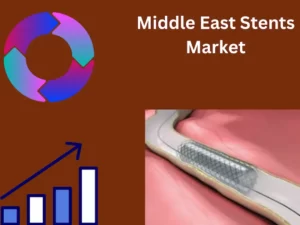© 2024 All rights reserved
Datavagyanik- Your Research Partner

Stents are medical devices used in interventional procedures to open and maintain the patency of blocked or narrowed vessels, ducts, or tubes within the body. They are widely used for the treatment of various diseases such as coronary artery disease, peripheral artery disease, and other cardiovascular conditions. Stents have become increasingly popular in the Middle East, driven by the growing demand for advanced medical technologies and the increasing prevalence of lifestyle diseases such as cardiovascular disease, diabetes, and obesity.

In the Middle East, the demand for coronary stents is particularly high. Coronary stents are used to open and maintain the patency of the coronary arteries, which are the blood vessels that supply oxygen and nutrients to the heart muscle. The high demand for coronary stents can be attributed to the increasing incidence of coronary artery disease in the region, which is driven by factors such as unhealthy diets, lack of physical activity, and the increasing prevalence of risk factors such as smoking and high blood pressure.
Another type of stent that is gaining popularity in the Middle East is the bioresorbable vascular scaffold (BVS). BVS is a new generation of stents that are made from biodegradable materials and are designed to disappear over time. BVS is becoming increasingly popular in the Middle East due to its ability to restore blood flow and provide long-term benefits without the need for permanent implantation. This makes BVS an attractive alternative to traditional stents, which are made from metallic materials and remain in the body permanently.
The increasing demand for stents in the Middle East is also driven by the growing awareness of their benefits and the increasing availability of advanced medical technologies. The region is home to several world-class healthcare facilities and well-equipped hospitals, which are equipped with state-of-the-art diagnostic and therapeutic equipment. These facilities have access to the latest stent technologies, and many are actively engaged in clinical trials and research aimed at improving patient outcomes and advancing the field of interventional cardiology.
In conclusion, the growing demand for stents in the Middle East is driven by the increasing prevalence of lifestyle diseases and the increasing awareness of the benefits of advanced medical technologies. The region is home to several world-class healthcare facilities, which are equipped with the latest diagnostic and therapeutic equipment and are actively engaged in research and development aimed at improving patient outcomes and advancing the field of interventional cardiology.
Stents are medical devices that are used to support and maintain the patency of a blood vessel, duct, or organ. Stents are used to treat various conditions, including coronary artery disease, peripheral artery disease, and cancer-related obstructions in the gastrointestinal tract. Stents are classified based on their intended use and design.
In addition to these types of stents, there are also several subtypes of stents that have been developed based on their design and function, such as:
The Saudi Arabia stents market is further driven by factors such as the increasing geriatric population, rising disposable income, and growing demand for minimally invasive procedures. Additionally, favourable reimbursement policies and government initiatives are expected to boost market growth over the forecast period. Moreover, increasing investments by key players in research and development activities are expected to create lucrative opportunities for market growth during the forecast period.
The UAE stents market is growing rapidly due to the increasing prevalence of cardiovascular diseases in the region. The UAE has a high prevalence of cardiovascular diseases, which is driving the demand for stents in the country. The government has also taken initiatives to promote awareness about cardiovascular diseases and encourage people to seek medical help for early diagnosis and treatment. This has further increased the demand for stents in the country. Additionally, technological advancements in stent technology have enabled better outcomes and improved patient safety, which is driving the growth of the UAE stent market.
The middle east Stents market has been segmented into Type, Product and Material.
Based on the Type, the middle east stents market is segmented into Coronary Stents, Vascular Stents, Ureteral stents, and Esophageal stents. In 2021, coronary stents held a significant revenue share. This was largely due to the increased demand for coronary stents as a result of the rising prevalence of coronary artery disease, the increasing preference for minimally invasive procedures, and technological advancements in stent designs. Furthermore, the increasing adoption of the drug-eluting stents segment is also expected to drive the coronary stents market’s growth over the forecast period. For example, drug-eluting stents are coated with drugs that are released into the artery to reduce the chance of the artery becoming blocked again, thus providing a greater long-term benefit than bare-metal stents.
Based on Product, the market is classified as Dual Therapy Stents, Bioresorbable Vascular Scaffolds, and Bio-engineered Stents. In 2021, the Dual Therapy Stents segment is expected to dominate the market. This is due to the increasing demand for minimally invasive treatments for cardiovascular diseases and increased awareness of the benefits of dual therapy stents. Additionally, technological advancements in stent technology have made them more effective and long-lasting. This is reflected in the growing adoption of dual therapy stents in clinical settings. In addition, there is a rise in research and development activities related to the development of innovative products. For instance, Medtronic recently launched its Onyx Frontier drug-eluting stent, which is the latest in drug-eluting stent technology and is based on the Resolute Onyx drug-eluting stent.
Based on Material, the market is classified as Non-degradable, and Degradable. In 2021, the Non-degradable segment is expected to dominate the market share. The demand for non-degradable stents is driven by their durability and long-term effectiveness, while the demand for degradable stents is driven by their ability to gradually dissolve and reduce the risk of restenosis. This means that non-degradable stents are preferred for long-term solutions, while degradable stents are better for short-term solutions as they reduce the risk of restenosis. For instance, non-degradable stents are often used for long-term treatments, such as when a patient is at high risk of restenosis, while degradable stents are more appropriate for short-term treatments, such as when the patient is at low risk of restenosis. Market trends and the adoption rate of these stent types can change over time, and it is imperative to stay updated on the latest market trends and developments.
By Type
By Product
By Material
By Region
“Every Organization is different and so are their requirements”- Datavagyanik







© 2024 All rights reserved
Datavagyanik- Your Research Partner
Add the power of Impeccable research, become a DV client